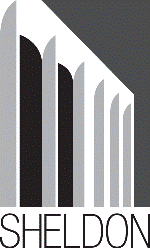Fine and Performing Arts, Hixson-Lied College of

Sheldon Museum of Art: Catalogs and Publications
Date of this Version
1985
Citation
RESOURCE AND RESPONSE, Sheldon Memorial Art Gallery
Abstract
This exhibition of Jene Highstein's sculpture initiates a series of exhibitions entitled the Resource Series. This series is a two-fold exhibition program, the first is: Resource and Response which will be a series of small scaled exhibitions in response to current issues and ideas of contemporary American art and artists. These Response exhibitions are to be far ranging in subject and content, but will reflect a regional component. The second part of the Resource Series is entitled Resource and Reservoir and these exhibitions will be drawn from the Sheldon Gallery's important permanent collection and will focus on subjects and themes in American art.
In black concrete or cast iron or torchcarved steel or (most recently) Pennsylvania granite, Jene Highstein's sculpture approximates the shapes of projectiles or cones or boulders. "Nobody else,'one critic observed, "makes anything really like his rounded, heavy shapes .... They are hardly organic, and hardly geological, but both at once. All the pieces are 'life-sized' but not 'lifelike'. Nothing moves, vibrates, or grows.'"
As uniquely his own as his more recent works are, Highstein's earliest efforts as a sculptor were anchored in the confluence of Earth Works, Conceptual Art, and Minimalism. Water Image, an outdoor piece executed in 1969, involved only a fishnet, 40' x 3', spread out over a field . Negative-Positive Cast of a Hole, done the next year, was somewhat more complex. The artist e~cavated a triangular hole, four and one-half feet on each side, and filled it with red plaster. When set, this was lifted out and set near the hole, one side carefully parallel to one edge of the excavation.
Ephemeral and closely tied to Art Povera -a movement which insisted upon the use of impoverished materials like dirt and grassthese works still offered a more tangible shape for ideas than did much of the work being done around 1970. In that year, many artists were ready to applaud Robert Smithson's statement: "The Establishment is a nightmare from which I am trying to awake." For social and politlcal as well as aesthetic reasons, there was a widespread concern with how one perceived as well as what one perceived. Often, this meant that the "art object" was no more than a report on the artist's activities.


Comments
All images are copyright by the original artists. Publication copyright 1985 The Regents of the University of Nebraska